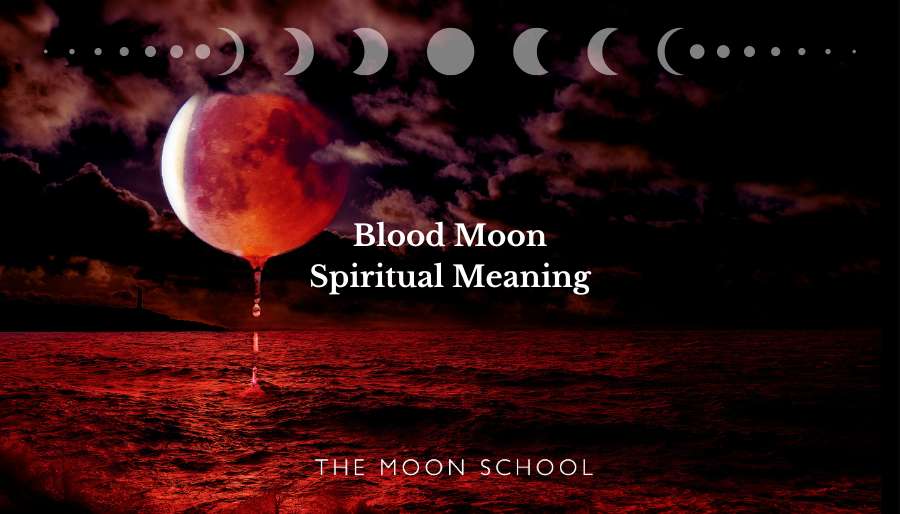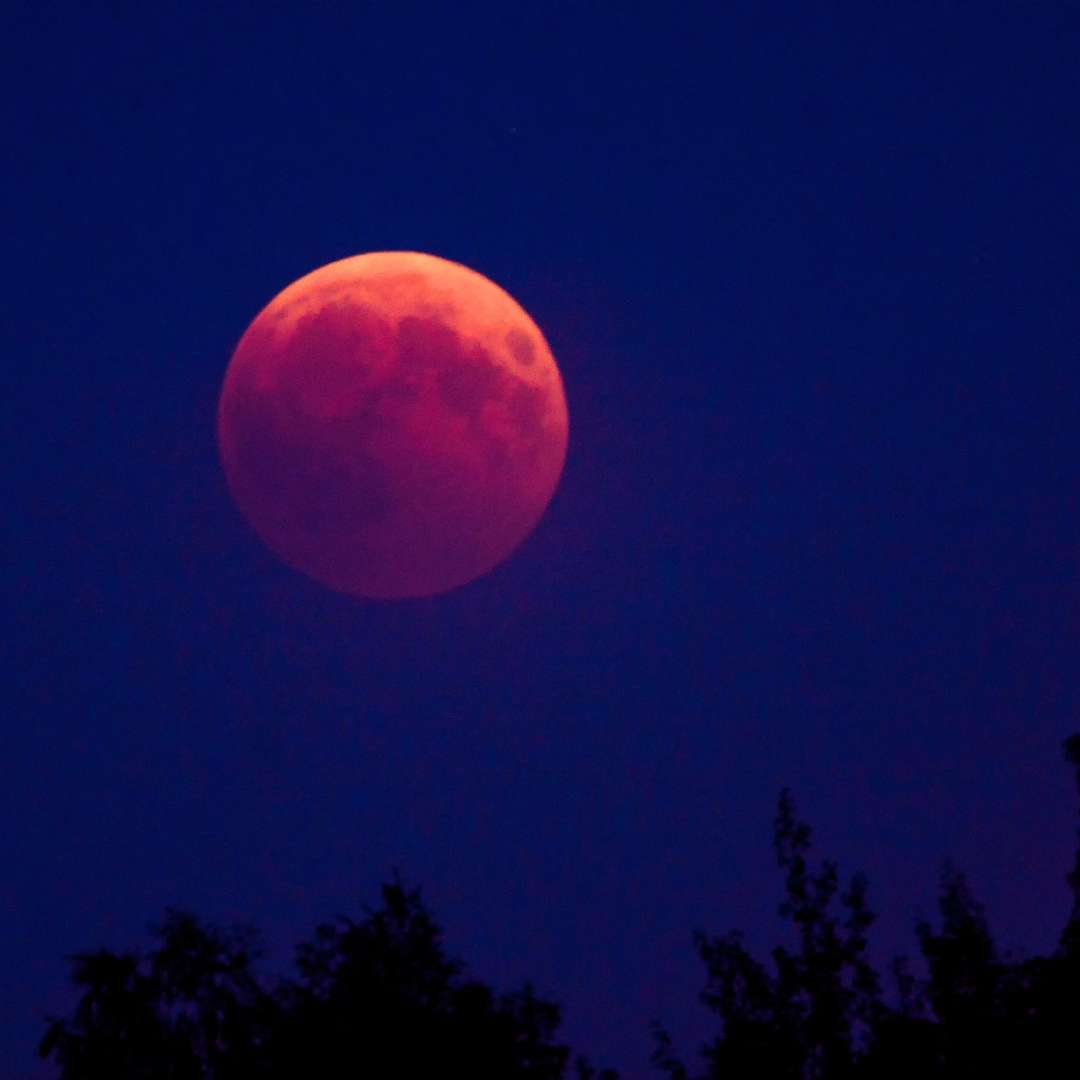A Blood Moon is a rare cosmic phenomenon that occurs when the Earth’s shadow falls on the Moon, giving it a reddish hue. As well as being an astronomical phenomenon, blood Moons have many deep spiritual meanings, interpreted differently by various cultures and religions.
While some believe that it’s a sign of impending doom, others perceive a blood Moon as time of spiritual awakening. Often associated with transformation, change, and new beginnings, these supercharged full Moons can be a time to reflect on your life and make positive changes.
Many people also use this powerful lunar event to meditate, pray, and set intentions for the future.
With the next blood Moon just around the corner, why not take some time to reflect on it spiritual meaning in your life, and see what insights it may bring you…
When is the next blood Moon?
The next blood Moon will occur on March 13/14th, 2025. The lunar eclipse will begin at 03:57 GMT on March 14th (23:57 EST on March 13th) and complete at 1000 GMT (6:00 a.m. EST) on March 14th.
It will be visible from everywhere on the night side of the Earth, if the sky is clear. It won’t be visible to people on the opposite side of the planet (see more here at Time and Date).
The last blood Moon was on November 8th 2022. This last total lunar eclipse was called the “Beaver Blood Moon”
What happens during a blood Moon?
A Blood Moon is a total lunar eclipse where the Earth’s shadow (umbra) falls on the Moon. This happens because the Earth blocks the Sun’s light from reaching the Moon, as it normally would at the full Moon phase.
Some of sunlight still reaches the Moon, but it is filtered through the Earth’s atmosphere. This process causes the shorter blue wavelengths of light to scatter and diffuse, while the longer red wavelengths are refracted back into the Earth’s shadow.
So over a number of hours, the visible Moon appears to darken and turn a reddish color, as it moves all the way into the Earth’s umbra.
The Moon turns red during an eclipse because of how the Sun’s light interacts with Earth’s atmosphere. The Earth’s atmosphere scatters the blue light waves, allowing only the red light waves to pass through. This is why the Moon appears red during a total lunar eclipse, which is why it’s called a “Blood Moon.”
What does the blood Moon mean spiritually?
The spiritual significance of a blood moon varies across different cultures and belief systems, yet in virtually all of them, it’s viewed as a powerful symbol of transformation and renewal.
In today’s world, eclipses are associated with heightened intuition and spiritual awakening and for some it also offers a time for profound introspection, and the releasing of old patterns.
Because a blood Moon occurs during a full Moon, they’re times of immense illumination. Information will often come to light that was previously hidden, and revelations can emerge, that seem to dramaticallty altar the course of people’s lives.
For this reason, blood Moons can triggering times, causing people’s shadows to rise, and unconscious patterns to emerge. On a larger scale, blood Moons ARE collective shadow – It’s actually our shadow that has turned the Moon red, and spiritually this is a time we’re being encouraged to also look at the darkness within.
For this reason, total lunar eclipses are a really good time to do your shadow work, and reflect on the shadow aspects of yourself, and how you maybe contributing to the collective shadow.
Use this time to release any negative emotions or patterns that are no longer serving you.
What are the myths behind blood Moons?
In ancient cultures, the blood Moon was often viewed as an omen of bad luck, death, or disaster.
In South America, the ancient Incans believed that when they saw the Moon turn red, it was being attacked by a jaguar in the sky. They held dramatic rituals and ceremonies to scare it away, lest it come and attack Earth too.
In ancient Mesopotamia, it was believed that the Moon God’s human representation on Earth was the king. To see the Moon red was perceived as a frightening attack on not only the Moon, but their own king. As expert astronomers, the Mesopotamians could predict lunar eclipses, so they were able to keep their king safely out of sight at these times.
For some Native American tribes, the blood Moon meant that the Moon was in trouble and needed care, and they would pray and perform ceremonies to heal and honour it.
Christian preachers have also associated the Blood Moon with the end of the world, citing biblical prophecies (this belief isn’t shared by all Christians!)
What does the Blood Moon mean in astrology?
In astrology, eclipses are significant events that bring about change and transformation, often in chaotic and unpredictable ways. This is a time when emotions are heightened, and we may feel more sensitive and intuitive than usual.
Because the full Moon represents a time of illumination, hidden information can rise to the surface during lunar eclipses, enabling a better understanding of our inner life.
Yet the revelations can be confronting, making thid challanging astrology. As pretty rare astrological events, eclipses tend to cast light on the darkest part of the psyche, shedding light on deeply hidden truths.
The red colour of the shadow cast may also be significant. Red is the color of passion, energy, and intensity, representing the fire element, and is associated with the planet Mars. The orange hues of the Blood Moon signify the merging of the fire and water elements, further symbolising the powerful energy for transformation and change.
Also read: 33 Spiritual Things to Do on Your Period
Other types of lunar eclipse
The next blood Moon will occur on March 13/14th, 2025. But blood Moons aren’t the only kind of lunar eslipse – here are the three types of lunar eclipse:
- Total lunar eclipse: The entire Moon passes through the Earth’s umbra, or inner shadow
- Partial lunar eclipse: Only part of the Moon passes through the Earth’s shadow
- Penumbral lunar eclipse: The Moon passes through the Earth’s penumbra, or outer shadow
When it the next lunar eclipse?
The next penumbral eclipse occurs on March 25th, 2024, at 07:00 GMT (03:00 EST/ 23:00 PST on the 24th). It will be visible to much of Europe, North and East Asia, North America, South America, the Arctic and Antarctica.
The next partial eclipse occurs on September 18th, 2024 at at 02:45 GMT (18:45 PST/ 22:45 EST on the 17th).
What is meant by eclipse season?
Eclipse seasons occur when the Moon and the Sun are aligned with the Earth in such a way that the Moon’s orbit intersects with the plane of the Earth’s orbit around the Sun. This alignment can cause four to seven eclipses to occur within a single year. There are usually two eclipse seasons in a year.
Eclipse seasons occur about six months apart, so each eclipse season is separated by about 173 days.










